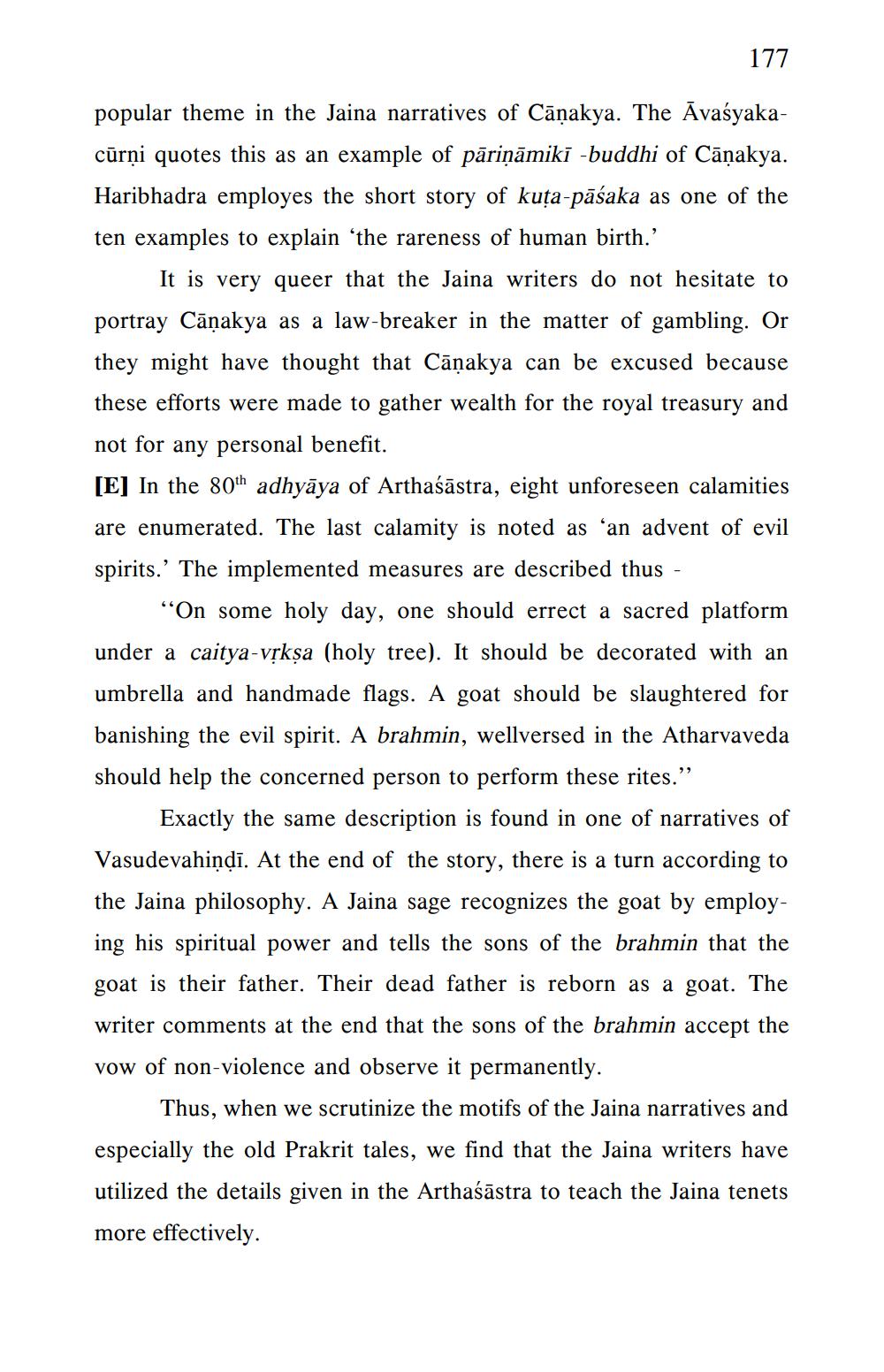________________
177
popular theme in the Jaina narratives of Cāņakya. The Āvaśyakacūrņi quotes this as an example of pāriņāmiki -buddhi of Cāņakya. Haribhadra employes the short story of kuța-pāśaka as one of the ten examples to explain the rareness of human birth.'
It is very queer that the Jaina writers do not hesitate to portray Cāņakya as a law-breaker in the matter of gambling. Or they might have thought that Cāņakya can be excused because these efforts were made to gather wealth for the royal treasury and not for any personal benefit. [E] In the 80th adhyāya of Arthaśāstra, eight unforeseen calamities are enumerated. The last calamity is noted as an advent of evil spirits. The implemented measures are described thus -
“On some holy day, one should errect a sacred platform under a caitya-vřkṣa (holy tree). It should be decorated with an umbrella and handmade flags. A goat should be slaughtered for banishing the evil spirit. A brahmin, wellversed in the Atharvaveda should help the concerned person to perform these rites.”
Exactly the same description is found in one of narratives of Vasudevahiņdī. At the end of the story, there is a turn according to the Jaina philosophy. A Jaina sage recognizes the goat by employing his spiritual power and tells the sons of the brahmin that the goat is their father. Their dead father is reborn as a goat. The writer comments at the end that the sons of the brahmin accept the vow of non-violence and observe it permanently.
Thus, when we scrutinize the motifs of the Jaina narratives and especially the old Prakrit tales, we find that the Jaina writers have utilized the details given in the Arthaśāstra to teach the Jaina tenets more effectively.




